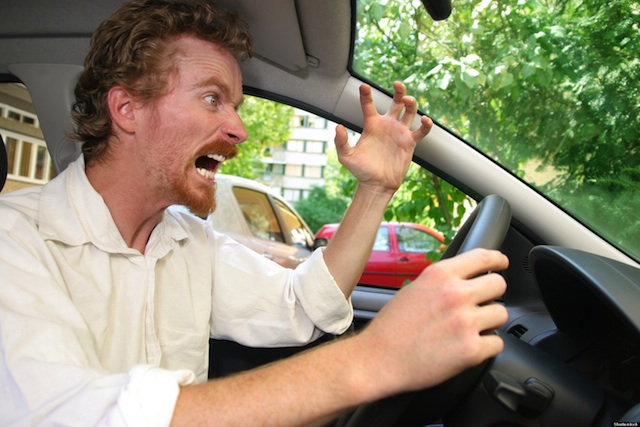
One of the most common practices on New Zealand roads has been cited as one of the main reasons for road rage in Britain.
Being “undertaken”, or passed at speed on the left, drives many drivers around the bend, according to a study of 2000 motorists.
Other “triggers” include a blast of the horn from another driver, tailgating, having someone brake hard in front of you, being flashed to get out of the way, and offensive hand gestures.
Road safety experts have for years said that New Zealand’s “merge like a zip” method is a classic road rage trigger, as it encourages impatient drivers to speed through on the inside.
The practice is also evident on motorways here where the absence of a few basic rules (trucks mostly in the left lane only, like Europe) again allows drivers to constantly pass on the left, or what’s known in road safety circles as the “blind side.”
The research by Continental Tyres reveals that the threat of road rage is why one in two British motorists no longer enjoy driving.
It also showed that around 15 per cent – or five million motorists – have got out of their car to confront another driver.
Continental Tyres produced the report to support its ‘Courtesy Campaign’ to encourage motorists to employ more courteous driving methods.
The study highlighted the need for awareness as it found that one in three road users ‘expect’ to experience aggressive or intimidating driving while out in the car.
Tim Bailey, safety expert for Continental Tyres said: “The figures are shocking. Of paramount importance is road safety but if motorists feel intimidated or angry they will lack concentration, increasing the danger for other road users, never mind not enjoying the driving experience.
Baily said the Courtesy Campaign was designed to help reduce the problem –“not only to improve safety and the driving experience but also because showing consideration to others on the roads actually eases congestion and reduces delays.”
The study also found seven out of 10 drivers believe they are more aggressive behind the wheel than at any other time.
It also emerged that when on the receiving end of road rage 40 per cent feel angry, 28 per cent feel shaken and nearly one in four (22 per cent) feel like retaliating.
Dr Mark Sullman, expert in driver behaviour at Britain’s Cranfield University said: “When driving, we are prevented from using the normal cues to work out people’s intentions, such as facial expression and body language, so we are more likely to misunderstand their behaviour and interpret it in a negative way.
“For instance, if you bump into someone on foot, a quick smile or ‘oops’ is all that is needed to show it was accidental.
“However, when in the car, with the absence of cues, people are much more likely to react in an aggressive manner than in other ‘public’ situations.”
Dr Sullman said: “You can choose not to let it rile you and instead deal with the situation in a positive way, such as concentrating on driving safely yourself or realising that everyone makes mistakes.”
The study also identified that Brits grudgingly accept their own failings.
More than four in ten (41 per cent) admitted they can be an angry driver while 15 per cent even own up to getting out of their car to confront another road user.
Continental’s Bailey added: “Avoiding the stop-start of harsh braking and acceleration associated with aggressive driving saves energy and improves the flow of traffic, reducing journey times which in turn should make motorists happier.”
[box size=”large” style=”rounded”]Some tips on our to stay calm at the wheel:
• Get into your chosen lane early
• Don’t respond to another driver’s anger or aggression – the anger is their problem
• It is not worth risking damage to your car and raising your insurance costs for the sake of making a point
• If a driver is acting aggressively towards you or driving too close, find another space. Safety experts call it the “safety bubble” – every driver should look for it
• Ensure you wave to thank other drivers. This can also be used to say sorry, if you have made a mistake
• If a driver in front indicates they want to change lanes, slow down to let them in, don’t speed up
• Equally, don’t cut in at the last minute, signal in good time[/box]
